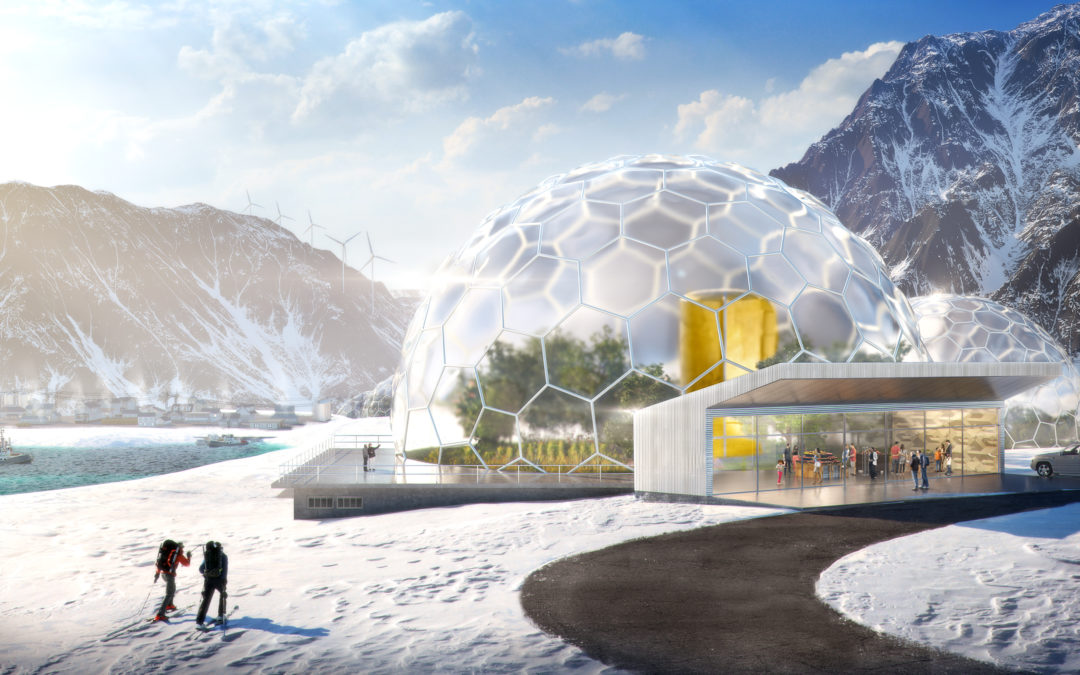Earlier this year, Third Way, a Washington based think-tank, commissioned Gensler to come up with sketches and renderings that can be used to explain the role that advanced reactors could play in a variety of energy systems that enable the world to reach its goals for reducing CO2 emissions. Those renderings were exhibited at D.C.’s Fathom Gallery on Oct. 28. The images can be downloaded from Third Way’s website.
Gensler worked up images for six “scenarios” where nuclear could provide low-carbon power. These include: A remote arctic community, off the power grid, where electricity is extremely pricey; A clean transit hub, where a small reactor powers rail lines, personal electric vehicles, shared autonomous vehicles, and electric buses; Growing communities in the developing world where large-scale reactors provide power, and whose excess capacity is used for an onsite desalination plant to provide clean water; A high-temperature reactor to power and heat for local industries; A Naval base, where advanced reactors generate around the clock electricity and power ships docked at port; and powering data centers, upon which many of life’s daily functions are increasingly dependent.
While much of the growth in nuclear energy technology is occurring overseas, specifically in Russia, China, and the United Arab Emirates, Third Way believes the renderings can help spur innovation in the U.S.—which in recent years has all but ceased building nuclear plants in favor of other forms of alternative energies—“and help American nuclear companies and technologies become more competitive in international energy markets,” says Baker.
She acknowledges that Gensler’s portfolio does not include a broad range of nuclear power plant designs. But, she explains, “We wanted a fresh eye on the topic.” Baker adds that Gensler’s designs typically emphasize sustainability, so the commission “was an alignment of values.”
Image: Third Way, A rendering of an arctic village, where small reactors produce energy, heat, and steam for residents, is one of six “scenarios” for nuclear power that Gensler illustrated for Third Way, a Washington D.C.-based think tank.
